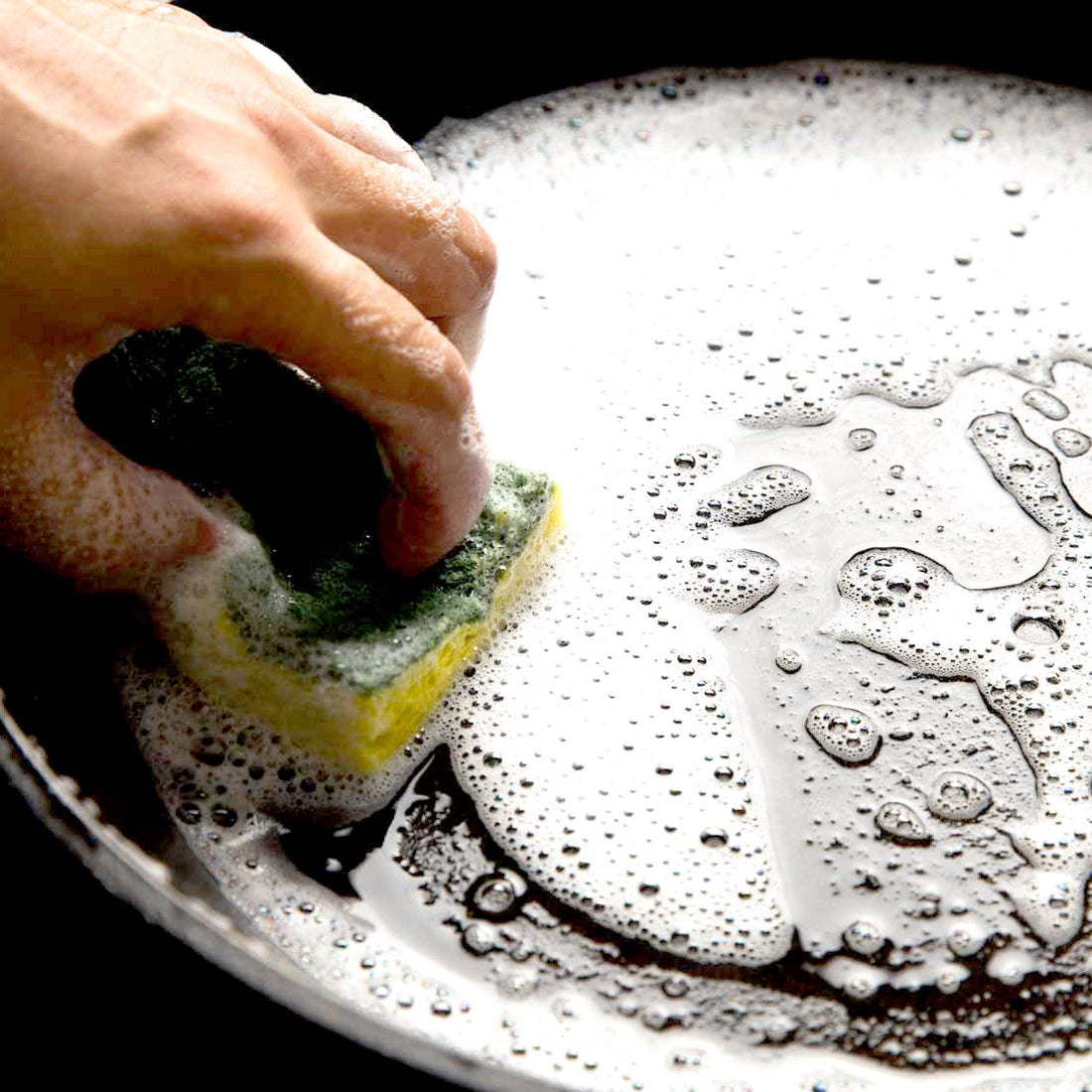
Make Ceramic-coated Pans Last: How To Clean & Care Like A Pro
Share
How do you keep your ceramic-coated cookware looking like new? It’s not easy to clean and maintain, but there are steps you can take to make your ceramic-coated pans last longer and stay looking like new. Here are some tips on how to clean and care for ceramic-coated pans like a pro.
Ceramic-coated cookware, not to be confused with pure ceramic cookware (read more about the difference between the two here) is essentially metal cookware (usually aluminum) with a ceramic-like coating on top that boasts non-stick benefits without the toxic hazards found in common PTFE non-stick cookware.
The non-stick coating is great and makes for easy cooking but requires maintenance and can stain especially if food is burned on it over high heat.
Like all non-stick cookware, ceramic-coated cookware has a limited useful life (usually 2-3 years) and will never be as durable as stainless steel or regular uncoated cast iron, due to the natural wear and tear on the coating which will eventually fade with use. However, with the proper care & maintenance, you can make them last longer. Read on.
When cooking:
- Always use only wood or silicone cooking utensils (we’re not a fan of plastic due to the risk of melting in high heat) when cooking in your ceramic-coated pans. Never use metal utensils.
- Never cut foods with a knife in your ceramic-coated pans.
- As on all non-stick pans, don’t use cooking sprays on your ceramic-coated pans as they leave residue that is harder to remove than regular oil/butter. This forces you to have to use abrasive and harsh chemicals to wash your pans which will cause the coating to erode more quickly.
- Do not use excessively high temperatures when cooking. Do not heat it beyond the medium heat setting.
- Do not heat up an empty pan (with no food in it) for a period of time as this will easily cause the pan to overheat and damage the non-stick ceramic coating.
Cleaning:
- Before cleaning, allow your ceramic-coated pan to cool. Sudden and drastic temperature changes can cause the pan to warp and the ceramic coating to wear faster.
- Use a non-abrasive sponge/soft dishcloth and some dish soap to clean the surface. Never, ever use steel wool or heavy-duty sponges as these will scratch the non-stick ceramic coating.
- To deal with stubborn burnt residue, soak your ceramic-coated pan with some water and 1-2 tbsp of baking soda and leave it to sit for an hour before scrubbing it with a gentle sponge again.
- To deal with stains or yellowing on the pan’s surface, cover the bottom of the pan with 3% hydrogen peroxide solution and leave to soak for 1-2 hours before washing it with dishwashing liquid and letting it dry.
- Never put your ceramic-coated pan in the dishwasher. While there are plenty of non-stick cookware (ceramic included) that are labeled dishwasher safe, we recommend not to do so. This is because contact with the high heat and harsh cleaning detergent will shorten the life of your pan.
- It is best not to use acidic solutions like lemon and vinegar to clean your ceramic-coated cookware.
Storing:
- Do not stack another pan over your ceramic-coated pan without a buffer pad as this will scratch the coating and cause it to fade faster.
- Do not use your ceramic-coated pan to store food in the fridge.
Conclusion:
Properly cleaning and caring for your ceramic-coated cookware is crucial to making it last. We hope these tips and tricks will help you keep your ceramic pans performing like new, so you can spend more time cooking with them and less time shopping for replacements. And as always, we’d love to hear from you! If you have any particular question on cookware—or any other kitchen topic—be sure to reach out on Instagram!
